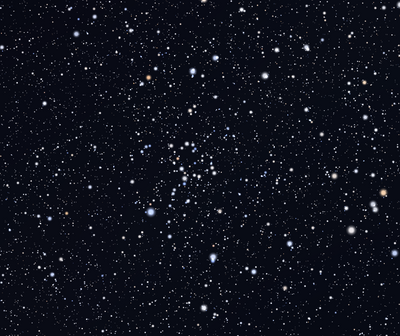NGC 1664

|
|
| AladinLite | |
| Constellation | Carter |
|
Position equinox : J2000.0 |
|
|---|---|
| Right ascension | 04 h 51 m 05.4 s |
| declination | + 43 ° 40 ′ 34 ″ |
| Appearance
|
|
| classification | III 1 p |
| Brightness (visual) | 7.6 likes |
| Angular expansion | 18 ′ |
| Number of stars | 150 |
| Physical data
|
|
| Affiliation | Milky Way |
| distance | 3900 ly (1199 pc ) |
| Age | 300 - 500 million years |
| history | |
| Discovered by | Wilhelm Herschel |
| Discovery time | October 24, 1786 |
| Catalog names | |
| NGC 1664 • C 0447 + 436 • OCl 411 • Mel 27 • Cr 56 • Lund 143 • GC 907 • H VIII-59 • Raab 19 | |
NGC 1664 is the name of an open star cluster in the Auriga constellation on the border with the Perseus constellation . NGC 1664 has an apparent magnitude of 7.6 mag and a diameter of 18 arc minutes . The distance from NGC 1664 is about 4000 light years, with a cluster size of just over 20 light years . NGC 1664 consists of around 150 known stars with a total mass between 600 and 900 solar masses. The age of this cluster is estimated to be 300-500 million years.
NGC 1664 was discovered by William Herschel on October 24, 1786 .